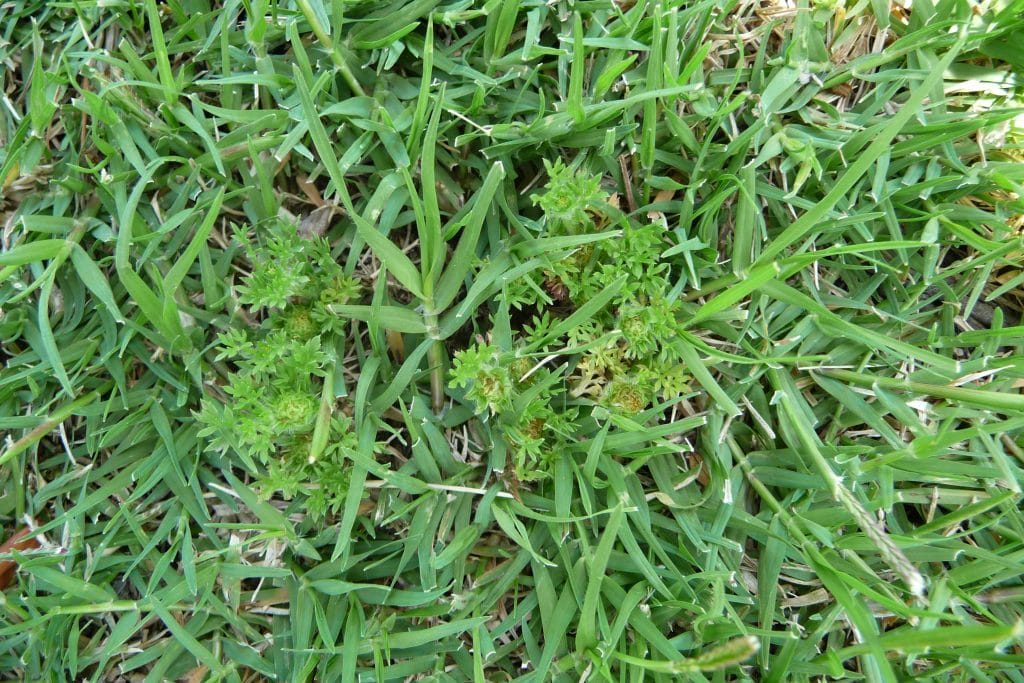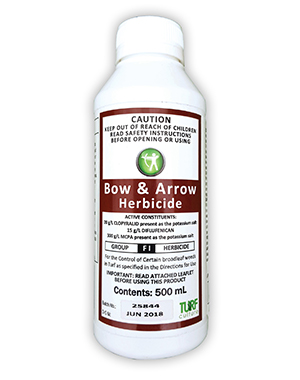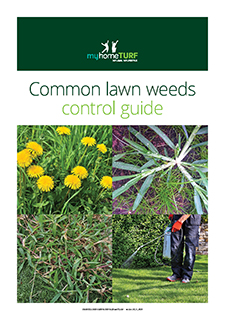What are Perennial Weeds?
Perennial Weeds are longer lived plants that can survive winter or regrow from roots, rhizomes or tubers in spring after a period of dormancy. Many weeds that grow from seed ...

Bindi is a prickly, painful, annoying lawn weed that can inhabit all grass types but now is the time to stop it in its tracks!
It forms during winter and is a low growing weed with carrot-type leaves. Other than patches of winter grass, it’s usually the only other bright green part of a patch of lawn in July.
Come spring, it produces a single flower that matures to form a prickly seed pod with three spines.
Once dried, in summer, this seed pod can splinter or puncture bike or pram wheels and is very painful on bare feet.
 During winter, the growth habit of your lawn is not as lush and thick as it is during other seasons, therefore weeds will find it easier to penetrate.
During winter, the growth habit of your lawn is not as lush and thick as it is during other seasons, therefore weeds will find it easier to penetrate.
Prevention is always better than a cure. So, during winter, try to grow a bit of extra length into your lawn and ensure the soil doesn’t become too compacted. Aerating with a garden fork is one way of elevating compaction.
Poorly nourished lawns also tend to be taken over by weeds such as Bindi. But don’t feed the lawn once the Bindi appears as this will only promote growth.
As Bindi is a low growing weed, mowing will not remove the problem. The seeds and flowers of Bindi can remain safely under the grass – well below the mowing height. The trick is to raise the height of the mower during winter to avoid scalping the lawn, which opens the lawn up to weed invasion.
So, in short, having a well maintained and nourished lawn helps prevent the onslaught of weeds during winter.
The best time to remove Bindi is late winter or early spring.
If you have a small lawn area, then hand removal is the best option. However, it is important to make sure you remove the plant along with its roots. If the Bindi has set seeds than hand removal is more difficult. Pouring boiling water on a small lawn area to control infestation is another option.
If the lawn area is too large to control by hand, then a selective herbicide can be purchased from a Nursery or myhomeTURF’s online store. Make sure you first read the label to ensure it is suitable for the type of lawn you have.
If the Bindi is already flowering then it is too late to apply a herbicide, so a product such as Bindi & Clover Weeder should be applied.
Another option is to use Iron Sulphate to control or kill the Bindi. You need 2 tablespoons or Iron Sulphate in 4.5 litres of water. Spray the mixture onto the Bindi affected areas. Iron Sulphate can be purchased from a Nursery or Garden Centre.
Most importantly though, eradicate now to avoid the real pain in summer.
Visit our lawn disease & weed control resource area to learn how to protect your lawn or refer to our article Most Common Lawn Weed Guide

Bow and Arrow 500mL is one of the most effective broadleaf liquid herbicides on the market. Suitable for Zoysia, Kikuyu, Couch and Buffalo grasses however transient discolouration may occur on Kikuyu, Carpet and Queensland Blue Couch lawns. Always read the safety directions and instructions on the product label before use.
SHOP NOWSign up for our Newsletter to receive your free guide.
